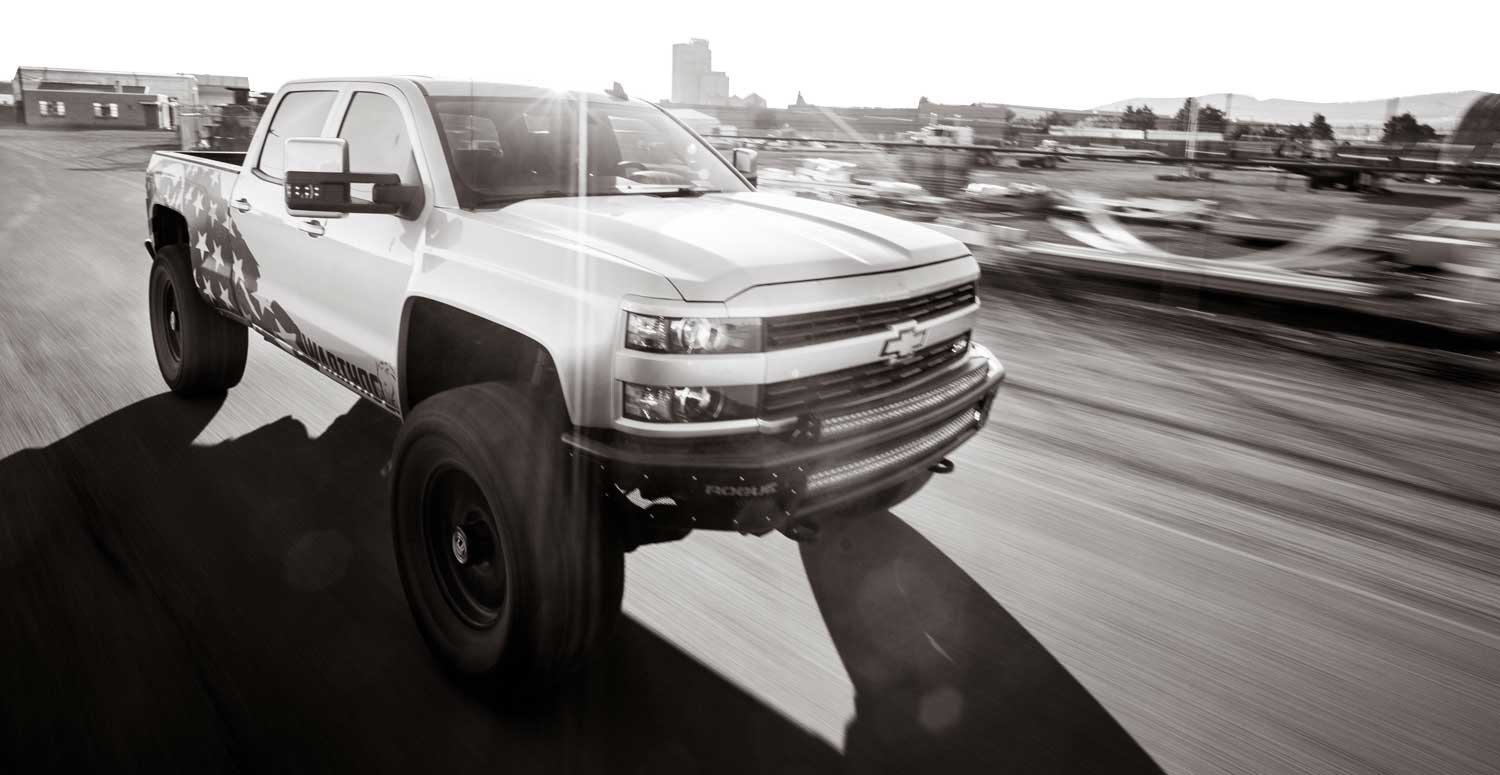There are hundreds of thousands of 6.6 Duramax powered GMC and Chevrolet pickup trucks driving on the roads today, and a good majority of those rigs are getting close to 20 years old, and many have over 200,000 miles. Generally, the major components of the drivetrain will last a very long time, but there are many supporting parts that can wear out which will cause collateral damage if left unattended. If you do have an older Duramax and want to keep it on the road for the long haul, you will have to spend a few bucks here and there, but thankfully there are many simple and cost-effective upgrades you can do that will prevent problems, but also improve performance, and even increase reliability.
Strong Foundation
My rule of thumb with any pickup truck I own, is to take care of any problems or issues before adding horsepower and performance, so that’s where we’ll start out. One of the most common issues you’ll find with a 15- to 20-year-old Duramax are leaks from various hoses and fluid lines. One system that’s a little more important than you might give it credit for is the power steering. A high-pressure hydraulic pump is driven by a belt from the engine, and it sends pressure to a steering gear box on the frame to assist with steering. If the power steering lines leak all the fluid out over time (which is somewhat common) or if they suddenly burst, you may think the only symptom will be a little more difficulty turning the steering wheel, but on a Duramax, when the power steering system fails, you also lose one very important system: the brakes.
Many gasoline powered vehicles use a vacuum booster to assist with braking power. Manifold vacuum from the engine goes into a canister on the firewall, which is mounted in between the brake pedal and the brake master cylinder, and the vacuum inside will amplify the force from your foot going into the master cylinder. A vacuum booster works great and the design has been around for many years, but it’s useless on a diesel engine. Because there is no throttle plate, diesel engines produces no manifold vacuum at idle (or ever), so manufacturers had to find some other way to assist with braking power. Hydraboost brakes instead use fluid pressure generated by the power steering pump to increase braking pressure and reduce pedal effort, and since the hydraulic pressures are so high, the stopping power is amazing. One drawback, however, is if you lose fluid pressure from a failed power steering pump or a broken line, your braking power is greatly diminished. Hydraboost systems do have a pressurized canister onboard that will give one or two emergency stops in the event of a loss of fluid pressure, but after that, you’re on your own. Needless to say, if your Duramax has leaky or failing power steering lines, you should get those fixed before coming up short in a panic stop situation.
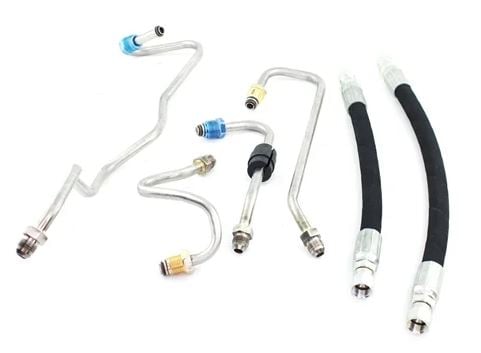
Another rule of thumb I live by, is it’s better to upgrade rather than replace, and an awesome solution for 2001-2010 Duramax equipped trucks is the Driven Diesel Power Steering line kit. It replaces the stock crimped together aluminum and rubber hose assemblies with a 4,000-psi rated line made from CNC bent stainless steel and top-quality hydraulic hose. It’s a one and done kind of solution for your older truck that will ensure you never lose braking pressure due to a leaky or failed hose. The kit comes with all the high-pressure lines you need as well, going from the pump to the Hydraboost on the firewall, and from the booster down to the gear box.
Transmission Leaks
Leaks are a fact of life on any older vehicle, and the next worst offender in an early Duramax is the transmission cooler lines. They are made from the same materials as the power steering lines: aluminum tube with short sections of crimped on flexible rubber hose to allow some movement of the engine. While the aluminum lines can easily deal with the relatively low pressure and temperature of transmission fluid, we still see the same issues as the power steering lines where the rubber and aluminum are joined with a crimped sleeve. Over time, leaks are guaranteed to develop, and while a blown trans cooler line won’t make you not be able to stop, it just means a huge mess, and if all the fluid leaks out, the truck simply won’t move. Fleece Performance has your leaky LB7 through LMM covered with their Allison Cooler Line Kit. It comes with everything you need to seal up the trans lines for good, and the aluminum hard lines are completely replaced in favor of much stronger hydraulic hose. AN fittings are included for the transmission, the oil cooler in the radiator, and the auxiliary oil cooler behind the grille. This will get the fluid where it needs to go, but since the trans cooler lines will be open for service, it makes for another great opportunity to upgrade.
Everyone knows that a cooler transmission is a happier transmission, and the PPE trans cooler for the Allison transmission has 60% more surface area than stock which provides a 20 to 30 degree drop in transmission fluid temperature and will easily connect to your Fleece cooler lines. Additionally, the kit comes with all the brackets and hardware required to mount the trans cooler to the A-frame behind the grille without any modifications required.

Leaky Transfer Case
Since we’re on the subject of leaks, there’s one more area you’ll likely need to address if you own a 4wd Duramax, and that’s the transfer case. Early Duramax trucks used either an NP261 (floor shift) or an NP263 (push button) transfer case, but they both use the same rear case half and oil pump, which means they both have the same problems. The stock oil pump in the transfer case is responsible for lubricating the gear train, and it’s driven by the rear output shaft. The body of the pump is held stationary by four thin tabs that index into the rear case, but due to vibration, the oil pump body can wear a hole through the backside of the case causing a small oil leak. While that doesn’t sound awful at first, the leak can go unnoticed, which can lead to an empty and unlubricated transfer case. This is one of those items you want to fix before it’s too late, but there are no good solutions from GM. Sure, you can buy a new rear case if yours has a leak, but that won’t prevent the same problem from happening again.
To solve the root of the problem, Merchant Automotive designed a Transfer Case Pump Upgrade Kit. If your case hasn’t worn through yet, it’ll only cost you about a hundred bucks for their new pump housing that has a much larger surface area on the pump tabs, so they won’t wear through the case. Along with the new pump body, you get some transfer case fluid, gaskets, and a set of magnetic drain plugs to catch any debris. If you’ve found the problem a little too late your case is leaking, Merchant Automotive also sells the kit with a new rear case half to replace the worn through stock housing.
Transfer Case Brace
When installing a transfer case pump, its easiest to perform the job with the transfer case removed from the truck. With the transfer case off, you might notice the rear adapter housing the transfer case bolts to is a bit on the small side. On later model trucks, GM redesigned the flange to be much larger and offer more support to the transfer case, but the earlier models have been known to fail and develop cracks on the rear casting. So, when you put your transfer case back on, an inexpensive insurance policy to prevent this damage from happening would be to also install a Merchant Automotive Transmission Rear Housing Support. The brace is made from 0.120” wall DOM tube and firmly attaches the transfer case to the outer row of bolts on top of the Allison, which supports the weight of the transfer case and will prevent any damage from happening, especially with aggressive throttle usage in 4wd.
Filter Upgrades
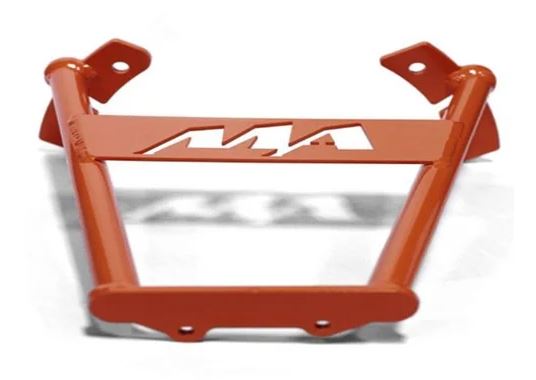
Maintenance is a simple but critical step to keeping any old truck on the road, and regular oil and filter changes are top of the list. Lubrication is the lifeblood of any mechanical system, and it’s important that the oil stays clean, but as oil circulates through your engine or transmission, it naturally picks up small particles of dirt. To help keep things running smoothly, manufacturers install filters after the oil pump so any small particles will be separated before the oil is sent into the bearings where dirt would cause the most damage. The stock AC Delco filter for the Duramax is rated to remove dirt in the 8-to-10-micron range, which is microscopic, but the filter has a somewhat limited surface area, especially when you consider the Duramax has 10 quarts of oil, and usually has a 5,000-mile oil change interval at minimum. For your next oil change, you can more than double the amount of filtration area, simply by installing a PPE Double Deep high efficiency engine oil filter. It will now trap particles as small as 5 microns which means your engine oil can stay much cleaner, will last longer, and you can even extend the change interval slightly (provided you use a quality Synthetic oil like Schaeffer’s).
Your Allison 1000 automatic doesn’t need its oil and filter changed quite as frequently as the engine, but it too can benefit from a PPE Double Deep filter. Automatic transmissions in general are a “dirtier” system than an engine, since clutch packs are constantly wearing during normal operation, so some friction material is always making its way into the fluid. The stock external spin-on filter of an Allison removes particles down to 30 microns, but the PPE Double Deep Allison spin on filter has 2.7 times the surface area, and best of all, will effectively remove particles down to 15 microns in size, half of what the standard filter will remove. Just because the filter will trap a smaller size particle, doesn’t mean it’s more restrictive; in fact, the PPE filter will also flow more fluid volume than the stock spin on filter.
Performance on a Budget? Yes.
Once the leaks and routine maintenance are taken care of, we can move onto the fun stuff and add some horsepower to your old Duramax, but Generally you don’t think of high-performance parts as a budget-oriented upgrade. We’ll skip over the basics like a cold air intake and 4” exhaust, since most trucks will already have those installed, but airflow and horsepower can still be improved further without breaking the bank. One of the most restrictive parts of the exhaust on a Duramax is the turbo direct pipe (or down pipe) that attaches directly to the back of the turbocharger and runs alongside the bellhousing and connects to the rest of the exhaust right behind the starter. Because it fits in some tight quarters, the stock part is very restrictive, and most exhaust kits leave the original turbo direct pipe in place. There is just enough room to install a larger pipe, and MBRP took advantage of that and designed a new turbo direct pipe with applications that can fit the LB7, LLY, LBZ, LMM, or even LML all while being 50 state legal. They feature improved bends at the outlet of the turbo for less restriction, and a full 3” diameter all the way through instead of the odd shape the factory down pipes have been squished into for extra clearance. With a free-flowing turbo direct pipe, you will enjoy lower EGT, improved horsepower and fuel mileage, as well as quicker turbo response since the exhaust can exit the turbine housing a little quicker, and the best part is they only cost about $230.
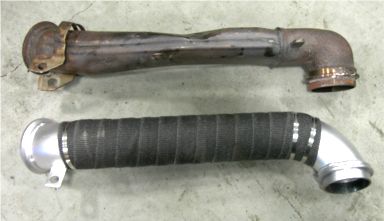
LLY Turbo Inlet
The LLY had the shortest run of any Duramax, as it was only installed in 2004.5 to 2005 model year trucks. It has earned a bad reputation for overheating, but that can be remedied very easily WHILE adding horsepower, and on a budget as well. Most of the overheating problem has to do with the very restrictive turbo inlet pipe. Basically, as air tries to enter the turbocharger, the inlet pipe causes a restriction, and because it’s starved for air, the turbo heats up what little air it has much more than it should. As a result, the intercooler gets much warmer trying to cool off the compressed air, which means warmer air is being sent into the radiator, which means the engine isn’t cooled off as effectively. It’s a vicious circle that causes the engine to get warmer and warmer, but that can easily be solved without spending an arm and a leg.
It turns out, a stock LBZ turbo intake horn can be fitted onto the LLY turbocharger, and its flow has been greatly improved which solves the overheating problem. The only trick to using a factory LBZ part is the original air intake tube that attaches to the airbox will be too long, but you can easily trim it shorter and use a silicone coupler to join the two with the PPE turbo inlet pipe kit which comes with the LBZ intake, coupler, and clamps. Alternatively, if you haven’t purchased a cold air intake yet, you can easily order an LBZ spec intake for your LLY so no cutting would be required. Finally, if you already have an LLY specific cold air intake you don’t want to cut, AFE makes a cast aluminum Bladerunner turbo inlet which not only eliminates the stock restriction, but also adds a dyno proven 23hp and 57 lb.ft. of torque, all for $339.
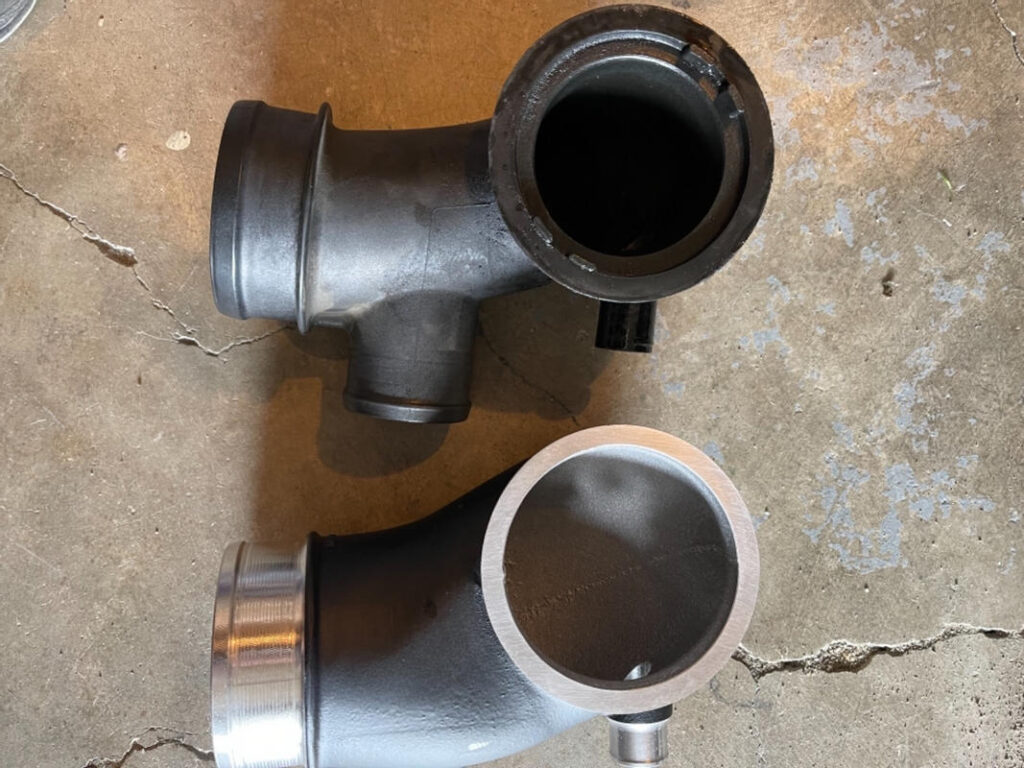
Where to Start?
When it comes to keeping your Duramax on the road and adding performance, your options are endless. As long as you don’t neglect the leaks and maintenance, the engine and transmission will last practically forever, and once you have a solid foundation, then you can add as many other customizations as you want. Long term truck ownership can make financial sense, and as long as you keep the truck interesting with a few key upgrades, it will be a long and happy diesel fueled journey.

